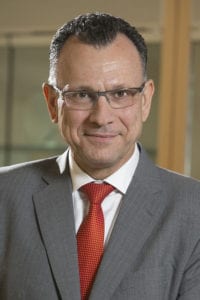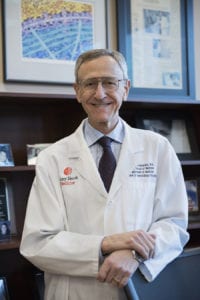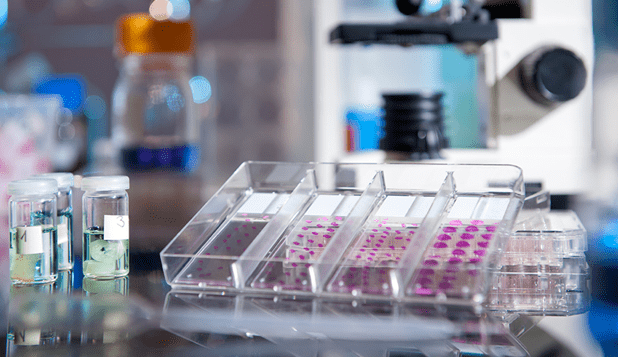By Daniel Dunaief
Screws can’t be the best and only answer. That was the conclusion neurosurgeon Daniel Birk at the Stony Brook Neurosciences Institute came to when he was reconsidering the state-of-the-art treatment for spinal injuries. The screws, which hold the spine in place, create problems for patients in part because they aren’t as flexible as bone.
That’s where Stony Brook University’s College of Engineering and Applied Sciences, headed by Fotis Sotiropoulos, plans to pitch in. Working with Kenneth Kaushansky, dean of Stony Brook University’s Renaissance School of Medicine, the two Stony Brook leaders have been immersed in uniting their two disciplines to find ways engineers can improve medical care.

The two departments have created the Institute for Engineering-Driven Medicine, which will address a wide range of medical challenges that might have engineering solutions. The institute will focus on developing organs for transplantation, neurobiological challenges and cancer diagnostics.
The institute, which already taps into the medical and engineering expertise of both departments, will move into a new $75 million building at the Research and Development Park, in 2023.
The original investment from New York State’s Economic Development Council was for an advanced computing center. The state, however, had given Buffalo the same funds for a similar facility, which meant that former Stony Brook President Sam Stanley, who recently became the president of Michigan State University, needed to develop another plan.
Sotiropoulos and Kaushansky had already created a white paper that coupled engineering and medicine. They developed a proposal that the state agreed to fund. In return for their investment, the state is looking for the development of economic activity, with spin-off companies, jobs, new industries and new ideas, Kaushansky said.
The two leaders are developing “a number of new faculty recruits to flesh out the programs that are going in the building,” Kaushansky added.
Sotiropoulos, who has conducted research in the past on blood flow dynamics in prosthetic heart valves, believes in the potential of this collaboration. “This convergence of engineering and medicine is already doing what it was intended to do,” he said. Clinicians can get “crazy sci-fi ideas, talk to engineers and figure out a way to make it happen.”
In addition to spinal cord support, researchers in engineering and medicine are working on developing algorithms to make decisions about surgical interventions, such as cesarean sections.
A recent project from principal investigator Professor Petar Djurić, chair of SBU’s Department of Electrical and Computer Engineering, and Gerald Quirk, an obstetrician and gynecologist at Stony Brook Medicine, recently received $3.2 million from the National Institutes of Health. The goal of the project is to use computer science to assist with the decisions doctors face during childbirth. A potential reduction in C sections could lower medical costs.
“This is a fantastic example of this type of convergence of engineering and medicine,” said Sotiropoulos.”

While the building will host scientists across a broad spectrum of backgrounds, researchers at Stony Brook will be able to remain in their current labs and coordinate with this initiative. Combining all these skills will allow researchers to apply for more grants and, Stony Brook hopes, secure greater funding.
“For a number of years now, the [National Institutes of Health have] really favored interdisciplinary approaches to important medical problems,” Kaushansky said. “Science is becoming a team sport. The broader range of skills on your team, the more likely you’ll be successful. That’s the underlying premise behind this.”
The notion of combining medicine and engineering, while growing as an initiative at Stony Brook, isn’t unique; more than a dozen institutions in the country have similar such collaborations in place.
“We’re relatively early in the game of taking this much more holistic approach,” said Kaushansky, who saw one of the earlier efforts of this convergence when he was at the University of California at San Diego, where he worked with the Founding Chair of the Department of Bioengineering Shu Chien.
The Stony Brook institute has created partnerships with other organizations, including Albert Einstein College of Medicine and Montefiore Medical Center.
“The more clinical people we engage, the better it is for the institute,” Sotiropoulos said.
As for the bionic spine, Kaushansky has familial experience with spinal injuries. His mother suffered through several spinal surgeries. “There’s a need for much, much better mechanical weight-bearing device that will help people with back problems,” he said.
At this point, Stony Brook has gone two-thirds of the way through the National Science Foundation process to receive a $10 million grant for this spinal cord research. Sotiropoulos suggested that a bionic spine could be “a game changer.”
While the institute will seek ways to create viable medical devices, diagnostics and even organs, it will also meet the educational mandate of the school, helping to train the next generation of undergraduate and graduate students. The school already has a program called Vertically Integrated Projects, or VIPs, in place, which offers students experiential learning over the course of three or four years. The effort combines undergraduates with graduates and faculty members to work on innovative efforts.
“These projects are interdisciplinary and are all technology focused,” Sotiropoulos said. “We bring together students” from areas like engineering, computer science and medicine, which “go after big questions,” and that the VIP efforts are structured to unite engineers and doctors-in-training through the educational process.
Through the institute, Stony Brook also plans to collaborate with other Long Island research teams at Cold Spring Harbor Laboratory and Brookhaven National Laboratory, Sotiropoulos said, adding that the scientists are “not just interested in doing blue sky research. We are interested in developing services, algorithms, practices, whatever it is, that can improve patient care and costs.”
Indeed, given the translational element to the work, the institute is encouraging a connection with economic development efforts at Stony Brook, which will enable faculty to create spin-off companies and protect their ideas. The institute’s leadership would like to encourage the faculty to “create companies to market and take to market new products and developments,” said Sotiropoulos.
Photos from SBU





